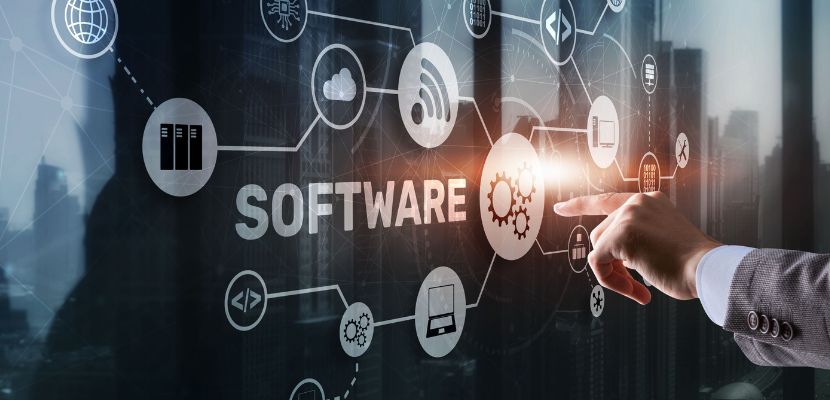Independent verification and validation (IV&V) is a process used to assess software systems or projects independently from the development team.

What Is an IV&V?
Independent verification and validation is the systematic process of evaluating a system's software and development processes conducted by an organization or team that is separate from the developers and project management. The goal of IV&V is to provide an objective assessment of whether the product being developed meets its specified requirements and whether those requirements are correct, complete, and testable.
Unlike traditional quality assurance activities that are typically embedded within the development team, IV&V is performed by an independent party to ensure impartiality and to uncover issues that internal teams may overlook due to familiarity or bias. The process involves analyzing design documents, source code, test plans, and other artifacts throughout the software development lifecycle to detect defects, inconsistencies, or areas of non-compliance with standards.
IV&V contributes to risk mitigation by identifying problems early and recommending corrective actions, thereby increasing confidence in the system's performance, safety, and overall quality before deployment.
What Is the Difference Between IV&V and V&V?
The primary difference between IV&V (independent verification and validation) and V&V (verification and validation) lies in the independence of the entity performing the evaluation.
V&V refers to the overall process of checking whether a system is being built correctly (verification) and whether it meets the user's needs (validation). These activities are often conducted by the development team or an internal quality assurance group.
In contrast, IV&V is a subset of V&V that emphasizes independence from the development process to ensure objectivity and unbiased results. While V&V may be integrated into the development workflow, IV&V is performed by a separate organization or team with no direct involvement in the project’s design or implementation, which helps uncover issues that might be missed due to internal assumptions or conflicts of interest.
What Is IV&V Used For?
IV&V is used to provide an objective assessment of a system’s development and performance to ensure it meets specified requirements and functions correctly, safely, and reliably. It is commonly applied in high-risk or mission-critical projects, such as in aerospace, defense, healthcare, and financial systems, where failures can have significant consequences.
By independently evaluating the software and associated processes throughout the development lifecycle, IV&V helps identify defects, gaps, non-compliance issues, and potential risks early on. This improves the overall quality and reliability of the system, supports regulatory or contractual compliance, and increases stakeholder confidence in the final product.
IV&V Standards
Independent verification and validation is guided by established standards that define best practices, methodologies, and requirements for performing objective evaluations. These standards help ensure consistency, reliability, and traceability in IV&V activities across different industries and project types.
Below are some of the most commonly referenced IV&V standards:
- IEEE 1012 – Standard for System and Software Verification and Validation. This IEEE standard outlines a lifecycle process for performing V&V on software and systems. It defines V&V tasks for each phase of development, including criteria for independence, and is often used as a foundation for IV&V programs in both government and commercial projects.
- NASA-STD-8739.8 – NASA Software Assurance and Software Safety Standard. This NASA standard includes guidance for IV&V in mission-critical systems, emphasizing risk-based analysis, safety assurance, and process improvement. It formalizes how IV&V should be integrated into NASA’s software lifecycle.
- ISO/IEC 12207 – Software Life Cycle Processes. This international standard defines the framework for software development and maintenance, including V&V as core processes. While not specific to IV&V, it provides a structural reference for how V&V activities fit within a full software lifecycle, supporting independent oversight.
- ISO/IEC 17020 – Conformity Assessment: Requirements for the Operation of Various Types of Bodies Performing Inspection. This standard is used to accredit organizations that perform independent assessments, including IV&V services. It sets requirements for impartiality, competence, and consistency in inspection activities.
- DO-178C – Software Considerations in Airborne Systems and Equipment Certification. Used in the aviation industry, DO-178C includes guidance on V&V processes, with IV&V often mandated for higher criticality levels. It ensures that airborne software meets stringent safety and reliability requirements.
IV&V Best Practices

To ensure that Independent Verification and Validation efforts are effective, consistent, and aligned with project goals, certain best practices have been established across industries. These practices help maximize the value of IV&V by promoting early issue detection, reducing risk, and improving overall system quality.
Here are the key best practices commonly followed in successful IV&V programs:
- Establish clear independence. IV&V must be conducted by a team or organization that is structurally and financially independent from the development effort. This reduces bias, avoids conflicts of interest, and ensures objective analysis of the system and its processes.
- Engage early in the lifecycle. Initiating IV&V activities at the earliest stages of the development lifecycle, starting with requirements and design, enables the team to identify issues before they propagate downstream. Early engagement reduces the cost of rework and supports better planning and risk management.
- Use risk-based approaches. Prioritize IV&V activities based on system criticality, complexity, and potential risk impact. Focusing resources on the highest-risk components or processes allows for more efficient use of time and budget while addressing the areas most likely to cause failure.
- Maintain comprehensive documentation. Thorough documentation of all findings, analyses, recommendations, and traceability is essential for transparency, accountability, and auditability. This also facilitates knowledge transfer and supports compliance with regulatory or contractual obligations.
- Verify both process and product. IV&V should examine not only the final software product but also the development processes used to create it. Assessing adherence to standards, methodologies, and quality assurance practices helps ensure that the system is both well-built and well-managed.
- Perform continuous monitoring and feedback. IV&V should not be a one-time checkpoint but an ongoing process. Providing continuous feedback to stakeholders and adapting assessments as the project evolves helps maintain alignment with goals and prevents issues from accumulating.
- Leverage qualified and experienced personnel. The effectiveness of IV&V depends heavily on the expertise of the personnel involved. Teams should include individuals with deep technical knowledge, domain experience, and familiarity with relevant standards and tools.
IV&V Tools and Technologies
IV&V relies on a variety of tools and technologies to assess software quality, compliance, and functionality. These tools support different phases of the development lifecycle and help automate analysis, testing, and reporting tasks, increasing the efficiency and accuracy of IV&V activities.
Below are commonly used categories of IV&V tools and examples of their applications:
- Static analysis tools. These tools analyze source code without executing it, helping detect syntax errors, security vulnerabilities, logic flaws, and deviations from coding standards.
- Dynamic analysis and testing tools. These tools execute the software in controlled environments to observe behavior, validate outputs, detect runtime errors, and monitor performance.
- Requirements management tools. Tools in this category help trace requirements throughout the lifecycle, ensuring that each requirement is implemented and tested correctly. They also support impact analysis and change tracking.
- Test management and automation platforms. These tools manage test cases, execution, and results while supporting automation frameworks and integration with CI/CD pipelines. They enhance repeatability and consistency in validation efforts.
- Configuration and change management tools. These tools monitor and control changes to software artifacts, ensuring consistency and traceability, which are critical for verifying integrity during IV&V.
- Simulation and modeling tools. In high-assurance systems such as aerospace or automotive, simulation tools are used to model system behavior, test edge cases, and validate control logic before real-world deployment.
- Code coverage and traceability tools. These tools assess how thoroughly the test suite exercises the codebase and help map tests to requirements or design elements.
- Security assessment tools. Specialized tools are used to identify vulnerabilities, check for compliance with security standards, and evaluate attack surfaces.
How Long Does IV&V Take?
The duration of independent verification and validation depends on several factors, including the size and complexity of the system, the scope of IV&V activities, the development lifecycle model, and the level of risk involved.
For small to medium-sized systems with limited scope, IV&V may take a few weeks to a few months. In contrast, for large, mission-critical systems, such as those used in aerospace, defense, or healthcare, IV&V can span the entire project lifecycle, from requirements through deployment, and may last several months to multiple years.
The timeline is also influenced by whether IV&V is conducted as a continuous process in parallel with development or as a concentrated effort at specific milestones. Early planning and integration of IV&V into the project schedule are essential to ensure sufficient time for analysis, reporting, and corrective actions without delaying delivery.
How Much Does IV&V Cost?
The cost of independent verification and validation varies widely depending on the system’s size, complexity, criticality, and the scope of the IV&V activities. For smaller, low-risk projects, IV&V may cost a few thousand to tens of thousands of dollars. For large, mission-critical systems, IV&V efforts can run into hundreds of thousands or even millions of dollars over the project lifecycle.
A common benchmark is that IV&V may account for 5% to 15% of the total project cost, depending on how early it is engaged and how extensively it is integrated into each phase of development. Costs can also increase based on the need for specialized tools, domain-specific expertise, compliance requirements, and the level of independence mandated (e.g., by regulators or contractual obligations).
While IV&V represents a significant investment, it often results in long-term cost savings by preventing costly defects, rework, and operational failures.
What Are the Benefits of IV&V?
The benefits of independent verification and validation center on improving software quality, reducing risk, and enhancing stakeholder confidence, particularly in complex or high-assurance systems. Because IV&V is conducted by an independent party, it offers an objective perspective that helps identify issues that internal teams might overlook.
This leads to early detection of defects, misaligned requirements, or process gaps, which reduces the cost and impact of rework. IV&V also improves compliance with industry standards and regulatory requirements, which is essential in sectors like aerospace, healthcare, and finance.
Additionally, IV&V contributes to better project governance by providing unbiased reports and recommendations, helping project managers make informed decisions. Ultimately, IV&V increases the reliability, safety, and maintainability of the system, leading to more successful deployments and reduced lifecycle costs.